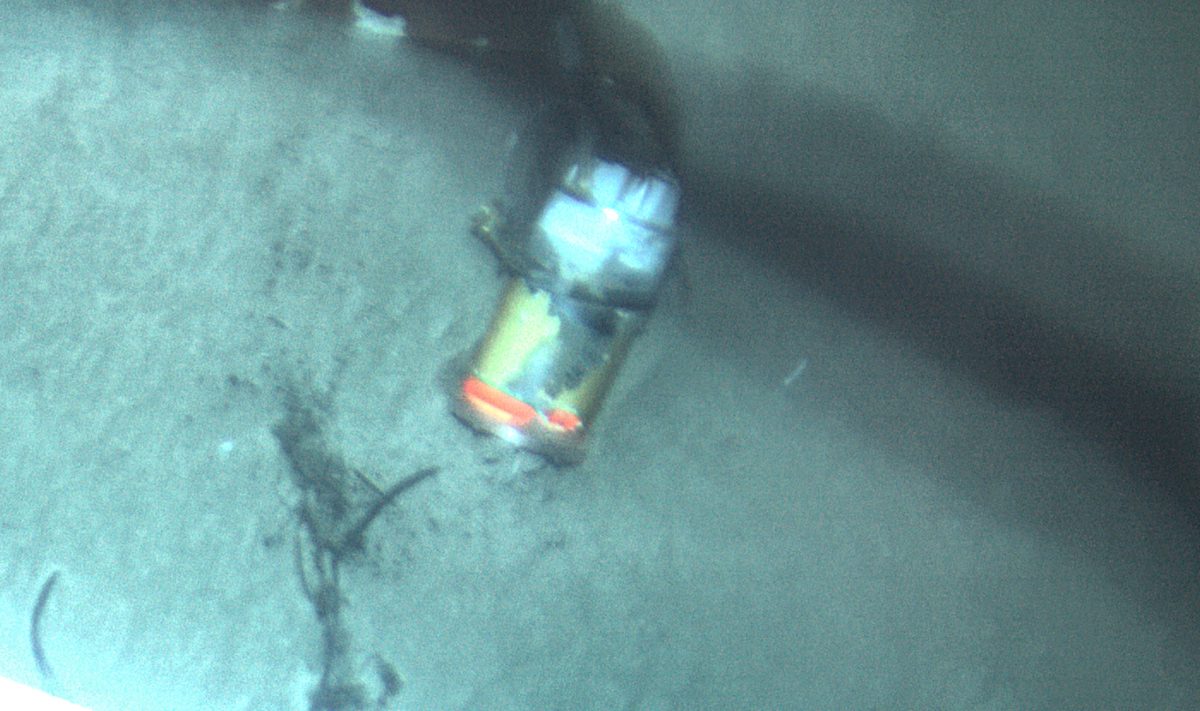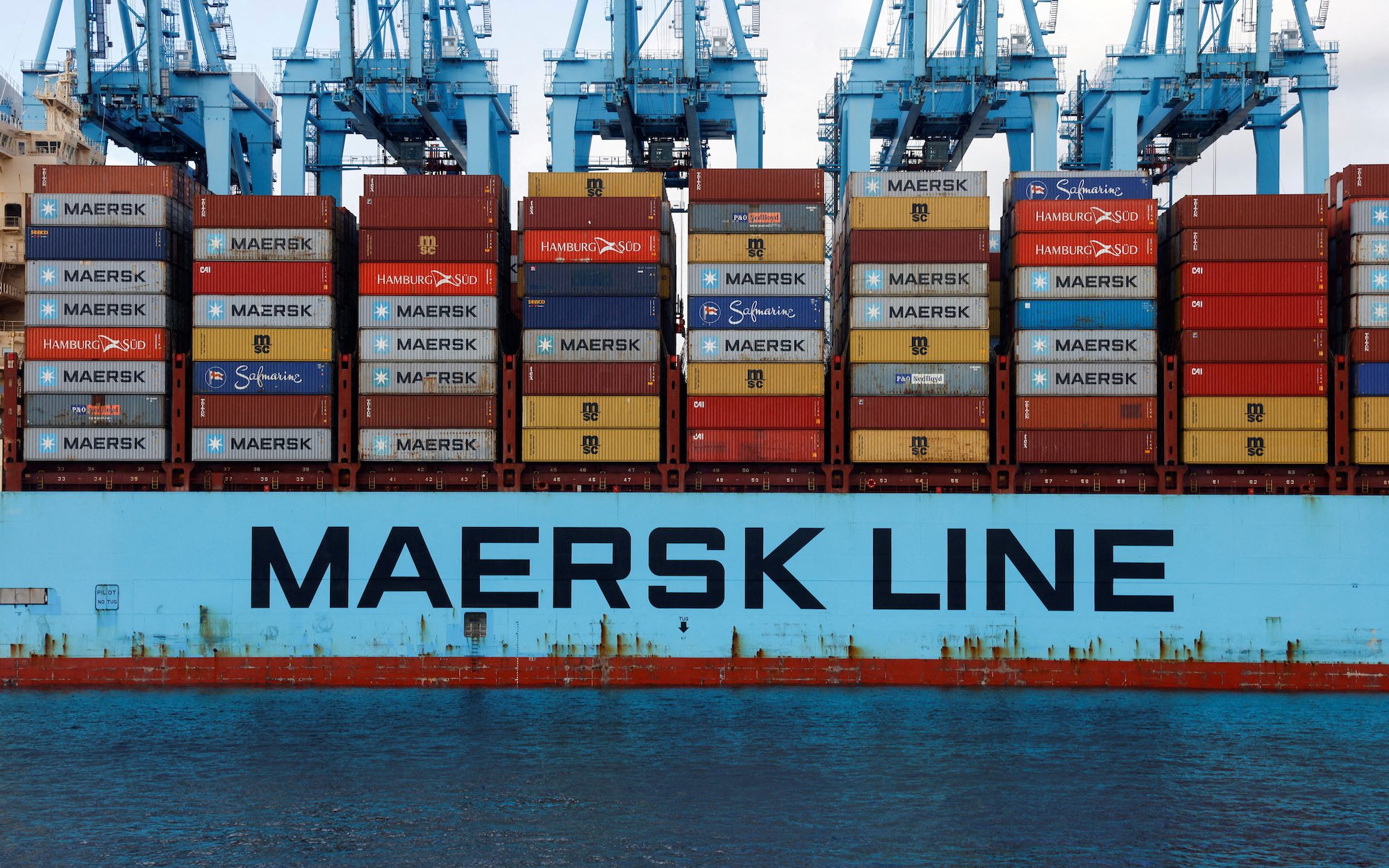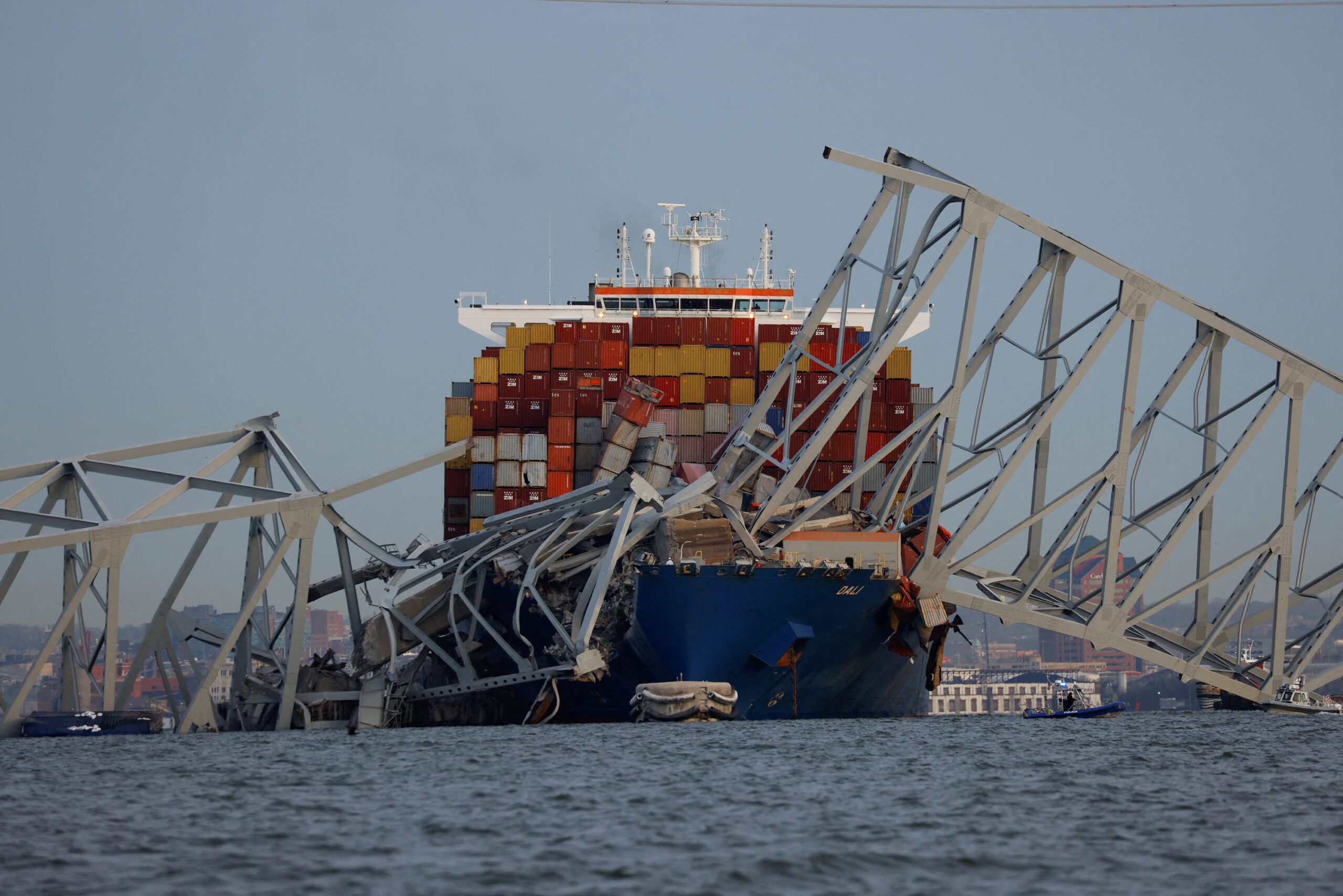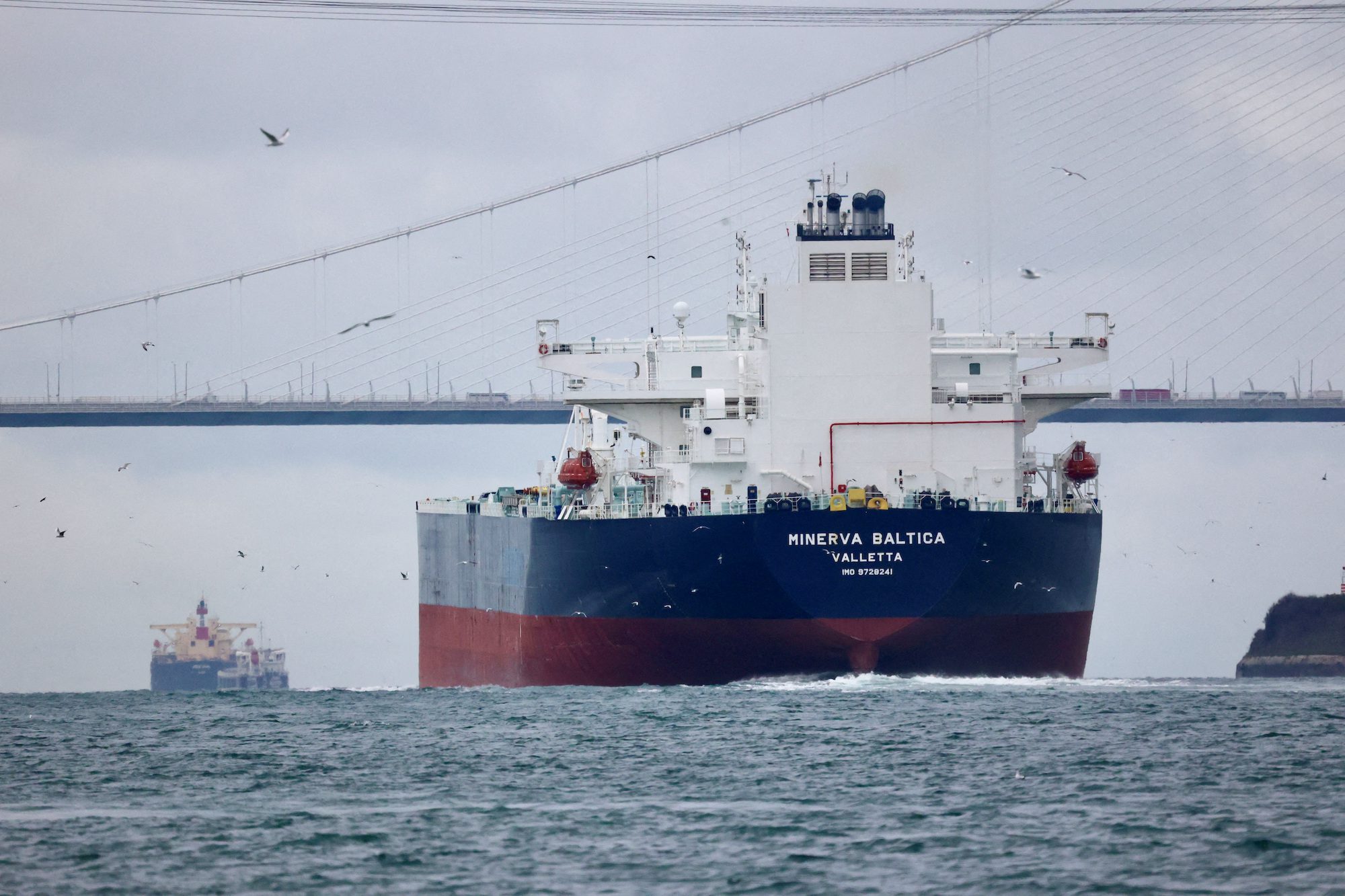El Faro’s VDR seen in the sand at a depth of 15,000 feet off the Bahamas. Photo credit: NTSB
The National Transportation Safety Board will launch the mission to recover El Faro’s voyage data recorder located in about 15,000 feet of water near the Bahamas early next month, investigators announced Monday.
The VDR of the U.S. flagged cargo ship that sank during Hurricane Joaquin Oct. 1, 2015 with the loss of all 33 crew members was located April 26 in a debris field about 450 meters from the main part of the wreck.
The wreckage of the El Faro was positively identified on Nov. 1, 2015, during the NTSB’s initial mission to locate the wreckage. Video gained from remotely operated underwater vehicles during the initial search revealed the El Faro’s navigation bridge structure, including the mast to which was the VDR mounted, and the deck below it had separated from the hull.
The navigation bridge was found Nov. 11, but searchers were not able to locate the mast or the VDR.
A second mission February succeeded in locating the VDR and completing video- and photo-documentation of the accident site. Shortly after the VDR was located, the NTSB announced that another mission to recover the VDR would be launched.
The VDR is a key piece of evidence of the investigation into what exactly caused the sinking of the American cargo ship.
The device records key pieces of information such as audio from microphones on the bridge, VHF radio communications, images captured from the onboard radar every 15 seconds, and Automatic Identification System traffic broadcasts whenever possible. It also records key parametric data about the vessel, such as date, time, GPS position, speed, and heading.
The trip to the accident site is expected to take three to four days, followed by five days on scene to recover the VDR. After the VDR is recovered and USNS Apache returns to shore, the VDR will be brought to an NTSB laboratory in Virginia where investigators will examine the VDR and download and analyze any information it may contain.
To recover the VDR, the NTSB contracted with the U.S. Navy Supervisor of Salvage for use of the USNS Apache and CURV-21, a remotely operated underwater vehicle, same equipment used to locate the El Faro wreckage in November.
Investigators from the NTSB and the U.S. Coast Guard, and engineers from the U.S. Navy and Phoenix International, the operator of CURV-21, will be aboard USNS Apache when it departs in early July for the accident site near the Bahamas.
Tags:
Unlock Exclusive Insights Today!
Join the gCaptain Club for curated content, insider opinions, and vibrant community discussions.

 Join The Club
Join The Club













